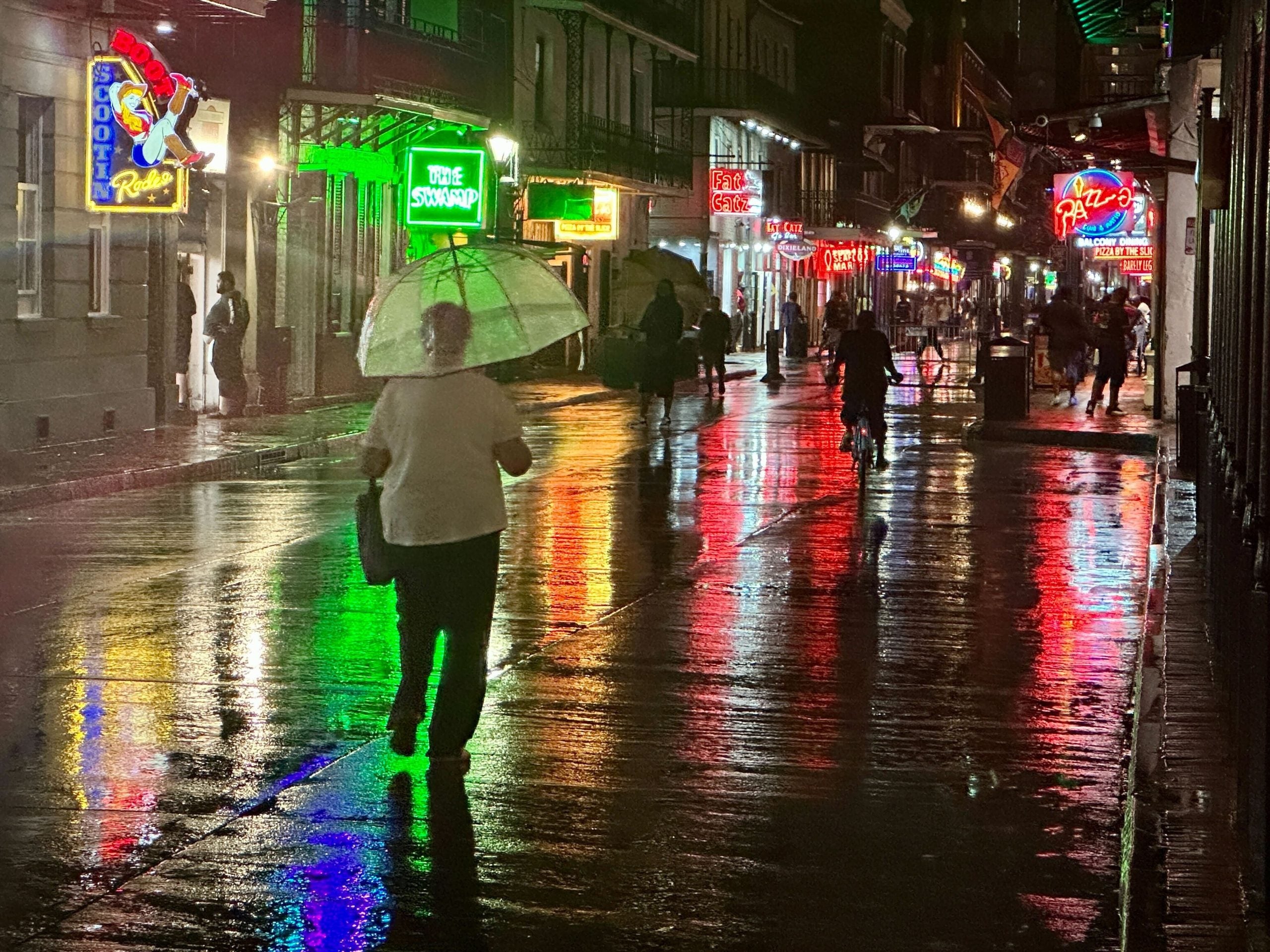NEW ORLEANS – The Interstate 10 corridor continues to be in the bull’s-eye for heavy precipitation and flashing flooding as a stalled frontal boundary triggers rounds of torrential rainfall.Flooding was reported from Jacksonville, Florida, along the I-10 corridor, through the perishes of southern Louisiana and into southeastern Texas on Wednesday.More than 5 million people were under Flood Watches, which included the New Orleans metro.The National Weather Service’s Weather Prediction Center issued a Level 2 out of 4 risk for excessive rainfall for communities stretching from south of Houston through southern Mississippi on Wednesday and has similar areas highlighted through the remainder of the workweek for additional flash flooding.According to the FOX Forecast Center, the front is acting as a conveyor belt for waves of moisture to pile up in cities such as The Big Easy – a pattern that is not expected to subside before the weekend.HOW TO WATCH FOX WEATHERForecast models show an additional 5 to as much as 11 inches of rain that could fall through the start of the next week, before the front finally moves out of the region.An influx of tropical moisture from as far away as the Caribbean has added insult to injury.This year, New Orleans has been under 11 Flash Flood Warnings just between June and August.At New Orleans International Airport, which technically is the official site for recordkeeping, 54.89 inches of rain has fallen so far this year, a respectable 8.4 inches above average. Meanwhile, just 10 miles to the east, downtown New Orleans has seen 10 inches more rain than at the airport – over 65 inches.Frequent flooding imposes a financial burden on residents and business owners, who must prepare for flooding during nearly every storm.This system is the same area that the National Hurricane Center was previously watching for development along the Texas and Louisiana coasts. However, with the low-pressure system expected to move onshore, any risk of tropical development has diminished.







